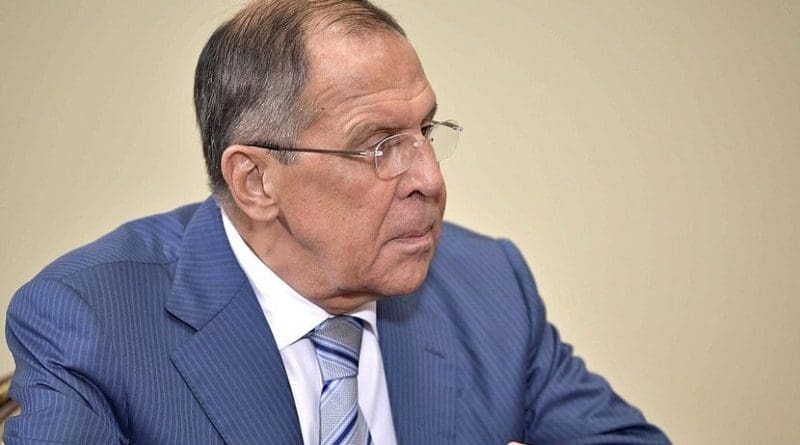When Kremlin’s Foxes In Blue Helmets Want To Guard The Henhouse – OpEd
Long-time Russian Minister of Foreign Affairs Sergey Lavrov expressed the necessity to raise the capabilities of CSTO peacekeepers so that they could become a part of the United Nations Peacekeeping.
The CSTO was established shortly after the collapse of the USSR and the Warsaw Pact in order to maintain a counterforce to NATO. The CSTO currently consists of Russia, Belarus, Kazakhstan, Armenia, Uzbekistan, Tajikistan and Kyrgyzstan, i.e. all of the former Soviet republics that have remained in Russia’s sphere of interests or for some reason are essentially dependent on Russia. There are no doubts that all the CSTO member states share the same ideological platform. So, what are the military formations of the CSTO that Lavrov so eagerly wants to engage in UN peacekeeping missions?
Russia: 98th Airborne Division (Ivanovo), 31st Air Assault Brigade (Ulyanovsk); Kazakhstan: 37th Air Assault Brigade, a naval infantry battalion; Belarus: 1st Spetsnaz Brigade; and one battalion each from Armenia, Kyrgyzstan and Tajikistan. There are plans to supplement the CSTO with units of the Russian Ministry of Emergency Situations and the Ministry of Interior’s special purpose units. Such units are also provided by Belarus and Kyrgyzstan. The CSTO also has a Russian aviation unit deployed in Kyrgyzstan.1
Fine, but what are the duties of the peacekeepers? They protect civilians, actively prevent conflicts, fight violence, further safety and authorize state institutions to take up these duties.2
Wait, either Lavrov has a peculiar sense of humor, or I am not getting something. The CSTO mostly consists of cutthroats – soldiers or police officers who were trained for the sole purpose of killing someone quickly, but now they are made into peacekeepers. You could also announce that lions and crocodiles will now switch to eating grass or that a serial killer has been appointed a surgeon in some hospital.
CSTO’s military forces cannot fulfill the duties of peacekeepers for the simple reason that they were not trained to do so. They were trained for a completely different purpose.
It is evident that Russian forces are the dominant ones in the CSTO. To such an extent that the CSTO is basically an organization established by Russia to serve its interests.
Let’s just look at some of the missions Russia has sent its troops to. Just a couple of cases.
Transnistria: the conflict began in 1990 in Soviet Moldavia, when the Russian-speaking minority of the Transnistria region separated and unilaterally announced independence.3
South Ossetia: when Georgia regained independence in 1991, it – led by Zviad Gamsakhurdia – attempted to regain control of its autonomous territories. In South Ossetia this turned into a 1.5 year war with roughly 1,000 casualties. The conflict escalated in 2008.4
Both these conflicts erupted because Russia wanted to prevent the establishment of sovereign nations, i.e. these countries wanted to leave Russia’s sphere of influence.
This is quite the peculiar situation, if you look at it. Russia was the reason for these conflicts to emerge, but then it also sent its peacekeeping forces to the same conflict areas.
Russia also wanted its peacekeepers to be sent to conflict areas in Ukraine. In Russia’s highly-developed hybrid warfare, these so-called “peacekeepers” are one of the methods of achieving its interests in Ukraine without launching a conventional attack.5
As we can see, this is an old Russian tactic – to create a conflict and then send its peacekeeping forces to the conflict. It should be noted that the USSR was not ashamed of employing the same approach. The Soviet Union sparked unrest and then sent its troops as the “liberators” to protect the working people. Everything new is just well-forgotten old, right?
It is most likely that Russia itself is completely aware that its “peacekeeping” operations don’t look so good from the outside, so it is looking for ways of covering this up. The CSTO is not a complete solution, because no one in the world considers the organization to be anything serious. The next thing to try is to “get under someone else’s roof” – why don’t we just go all-in and attempt to become a part of UN Peacekeeping?
An interesting question comes to mind – are these attempts to become “peacekeepers” linked with the conflicts already caused by Russia, or with conflicts that are only yet to be brought upon us?
I believe the UN should clearly state that countries who engage in aggression against other countries cannot participate in peacekeeping operations, because otherwise we would be in a situation where we decide to send a fox to guard our henhouse.
Sources:
1https://military-kz.ucoz.org/index/vojska_odkb_ksor/0-63
2https://peacekeeping.un.org/en/what-we-do
3https://www.apollo.lv/4674863/vai-piednestras-konflikts-uzliesmos
4https://www.delfi.lv/news/krievijas-gruzijas-karam-10/krievijas-gruzijas-karam-10-ka-sakas-brunotais-konflikts.d?id=50262795
5https://www.lsm.lv/raksts/zinas/arzemes/politologs-kopeju-miera-uzturesanas-speku-ievesana-ukraina-lautu-reali-palidzet-ukrainai.a94126/

